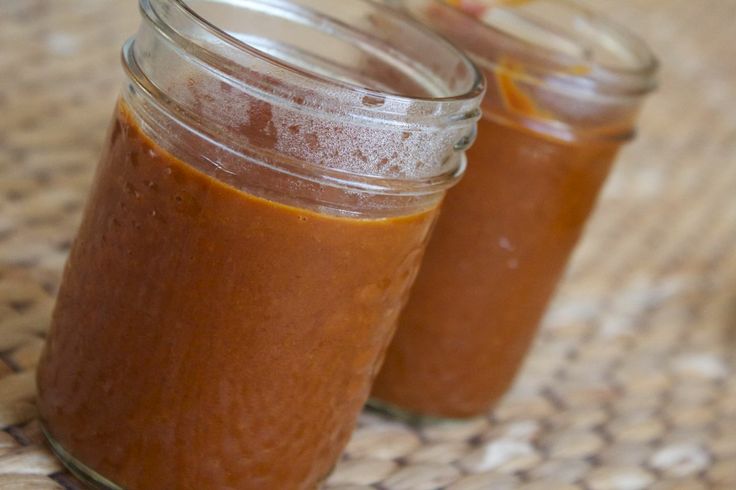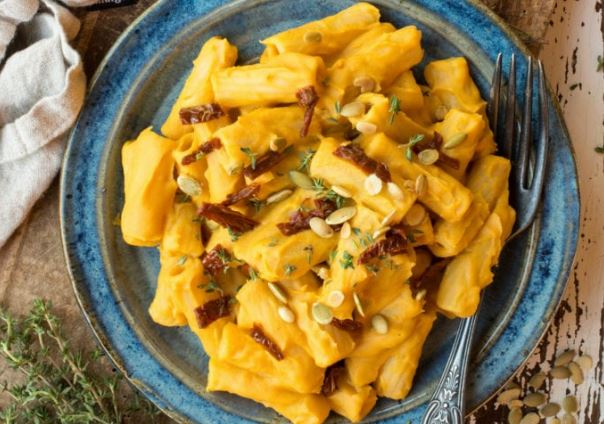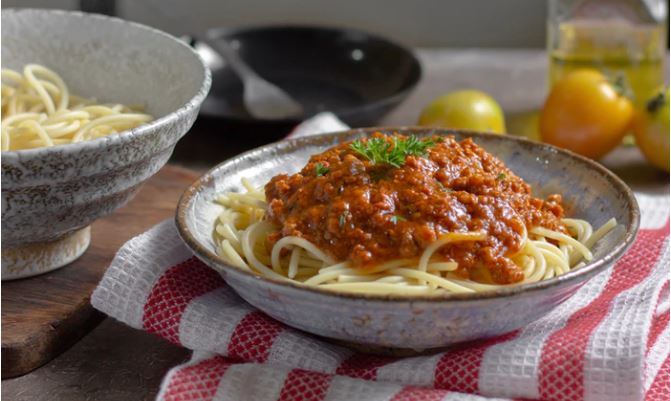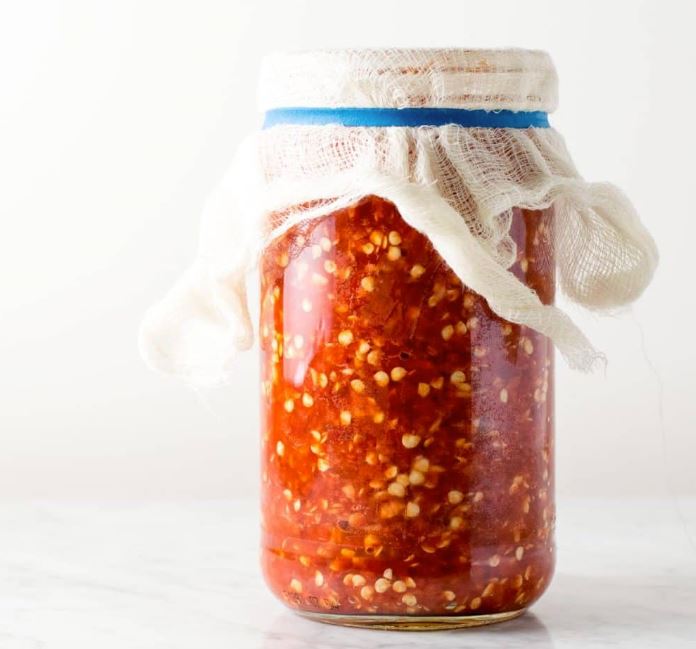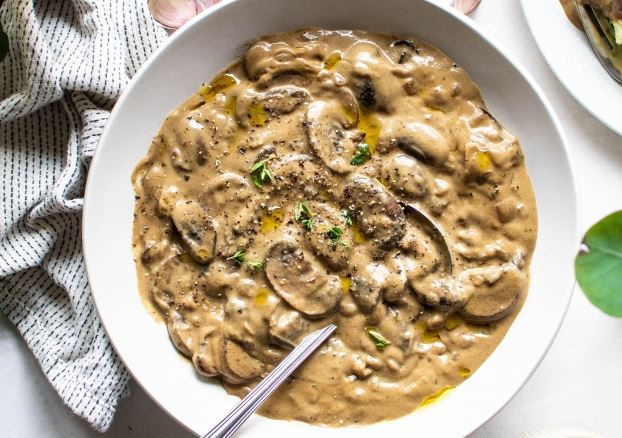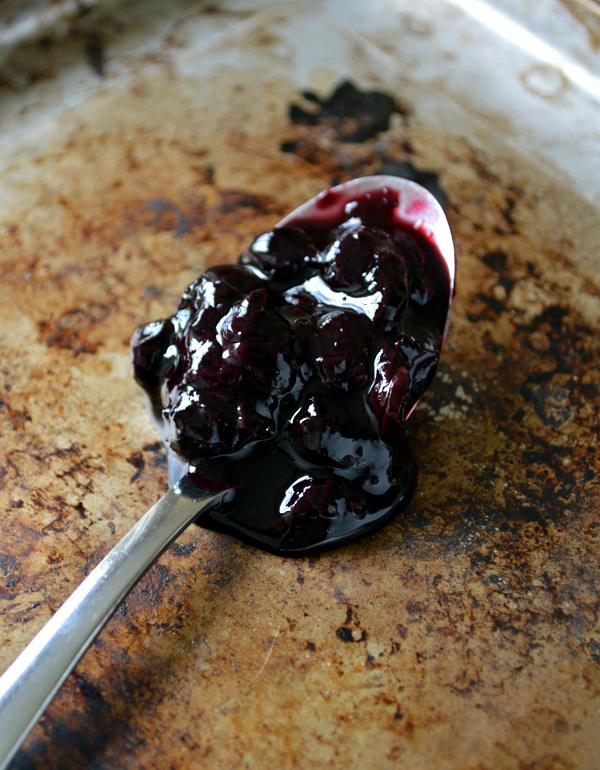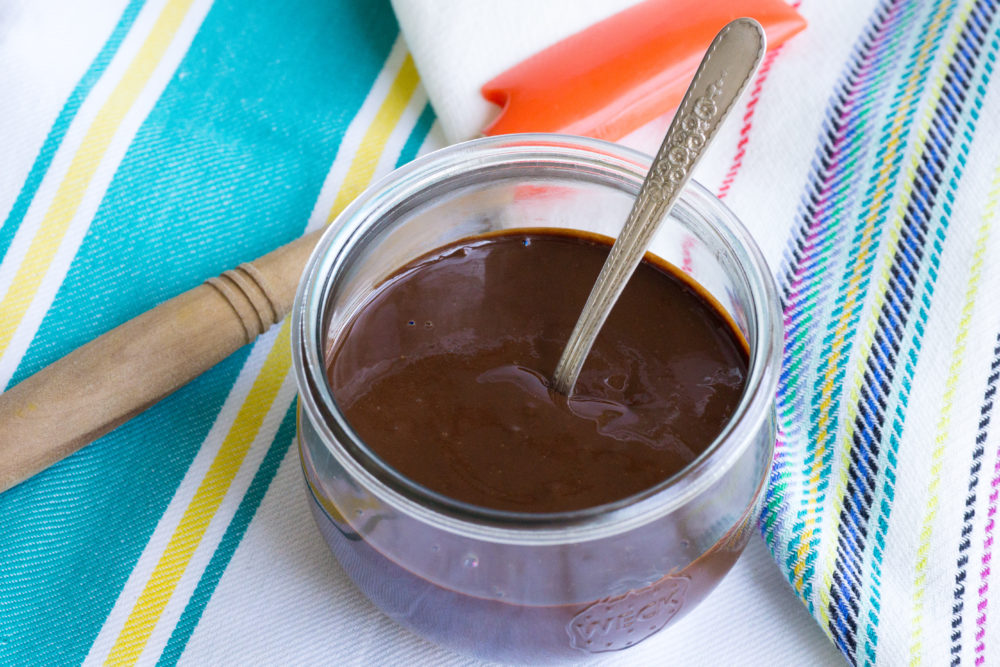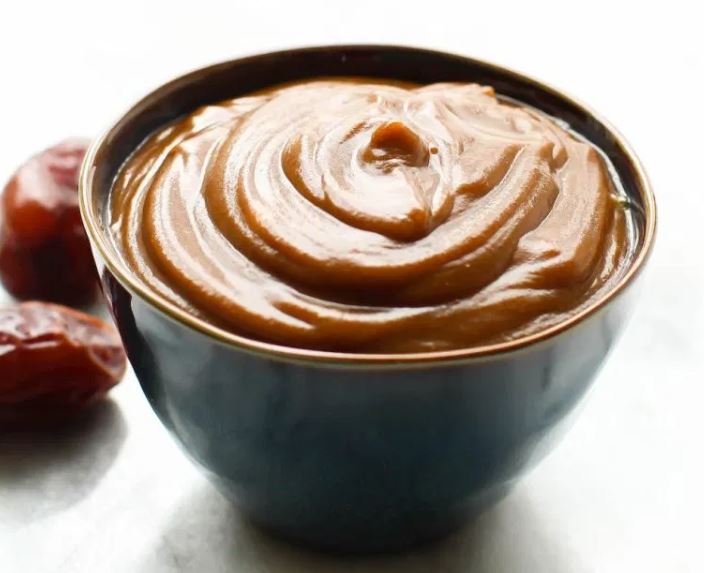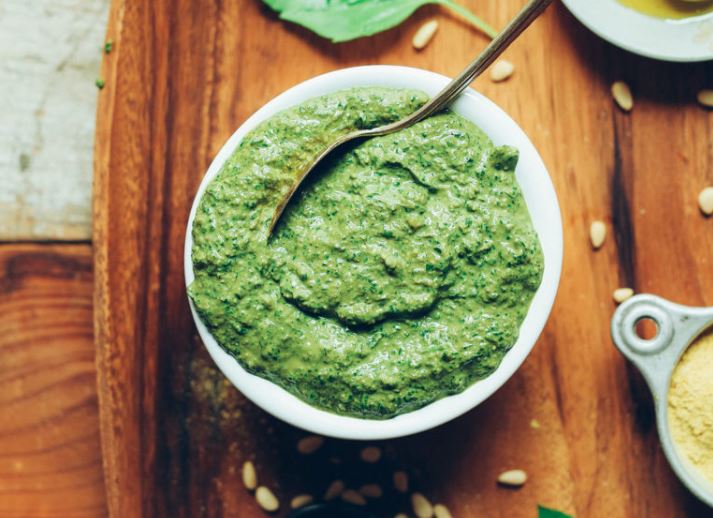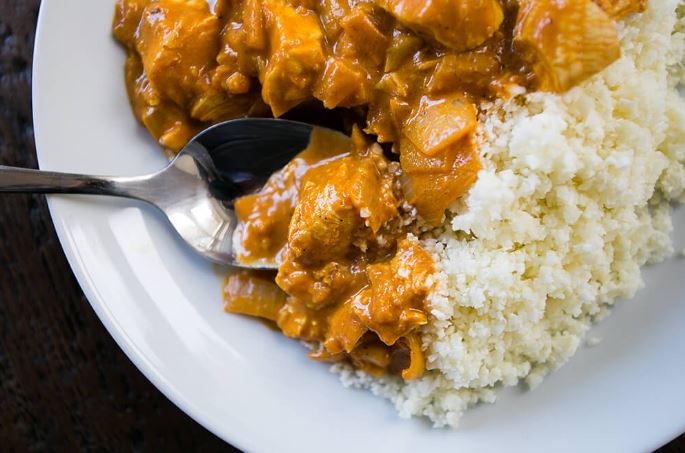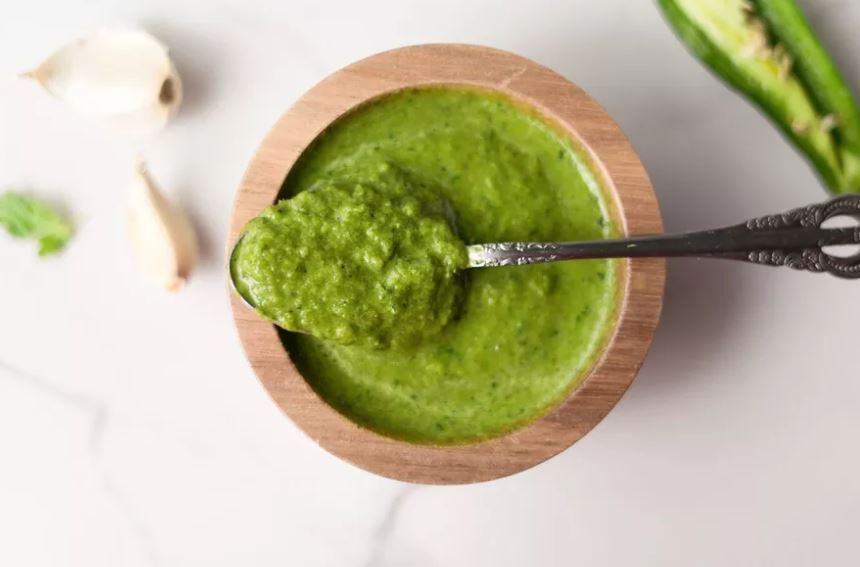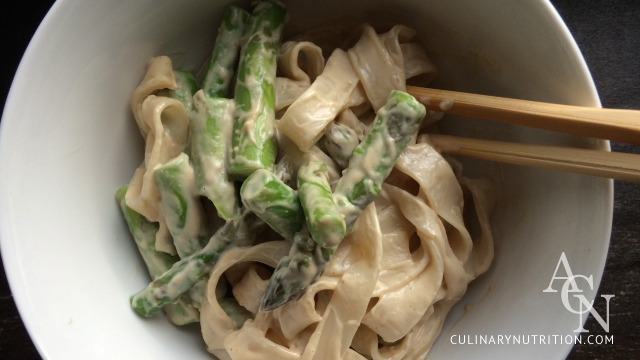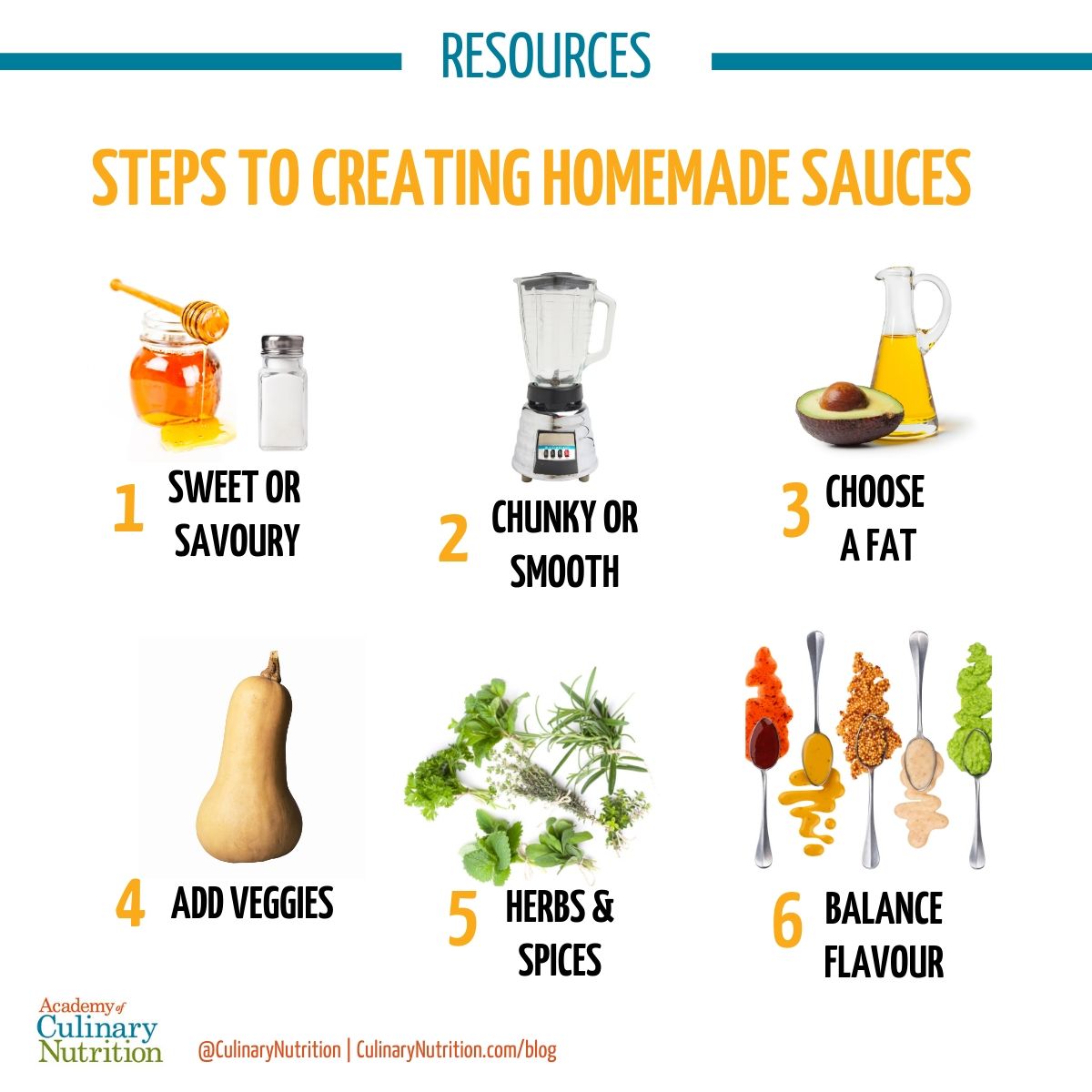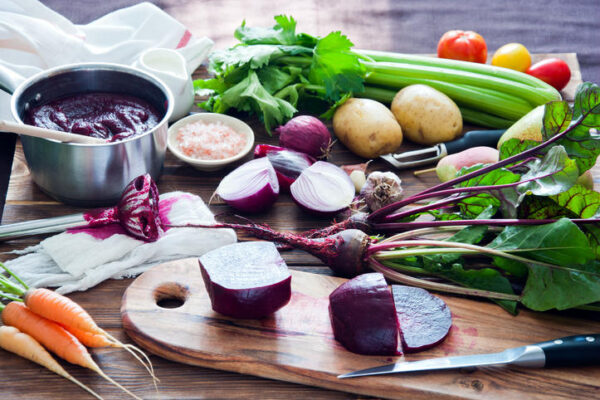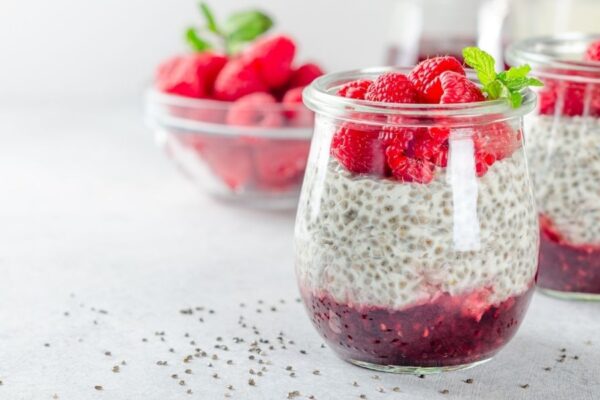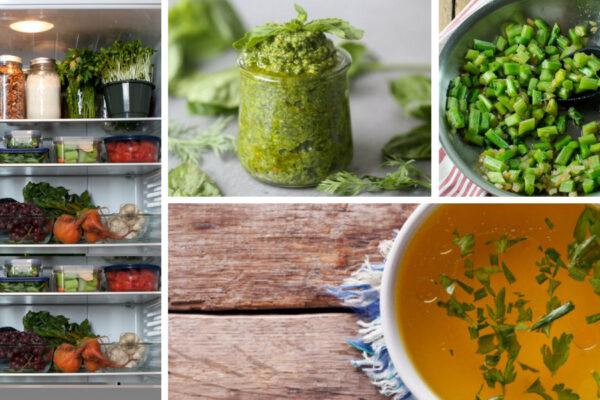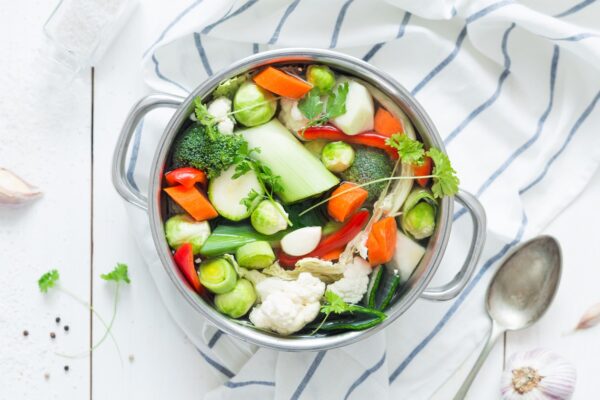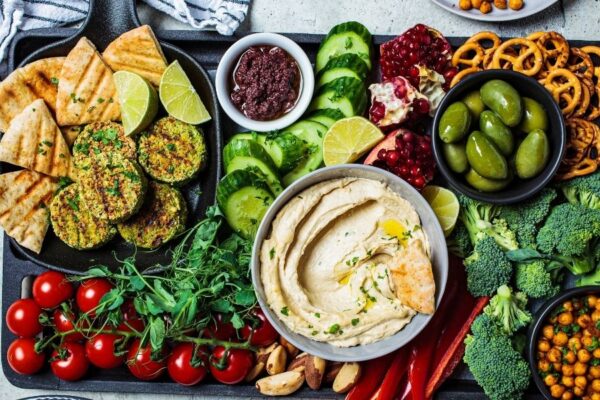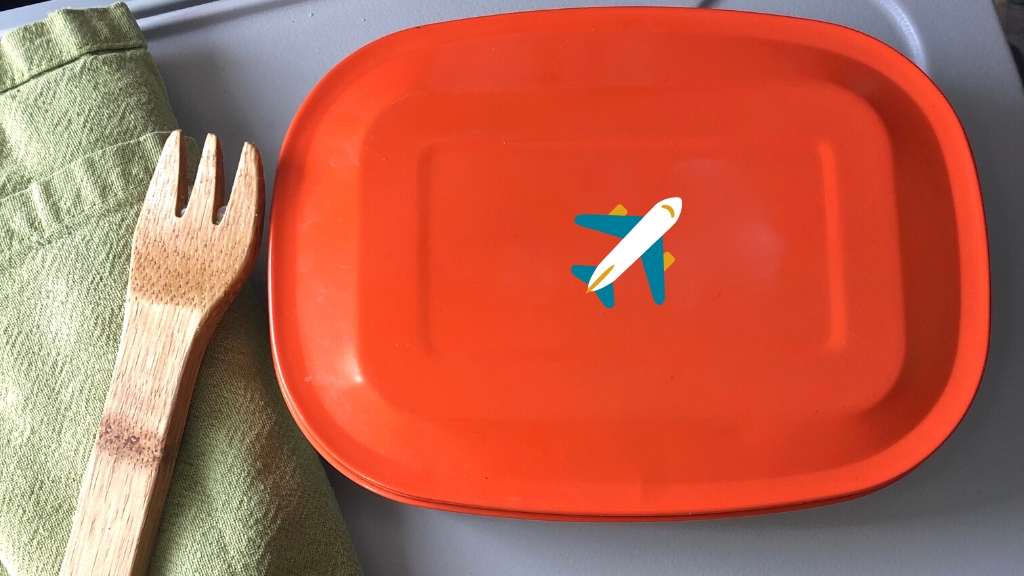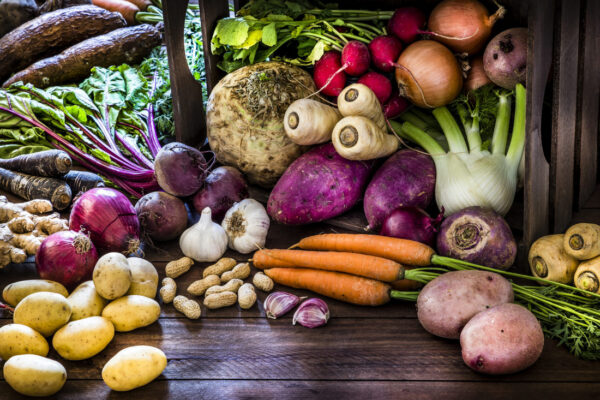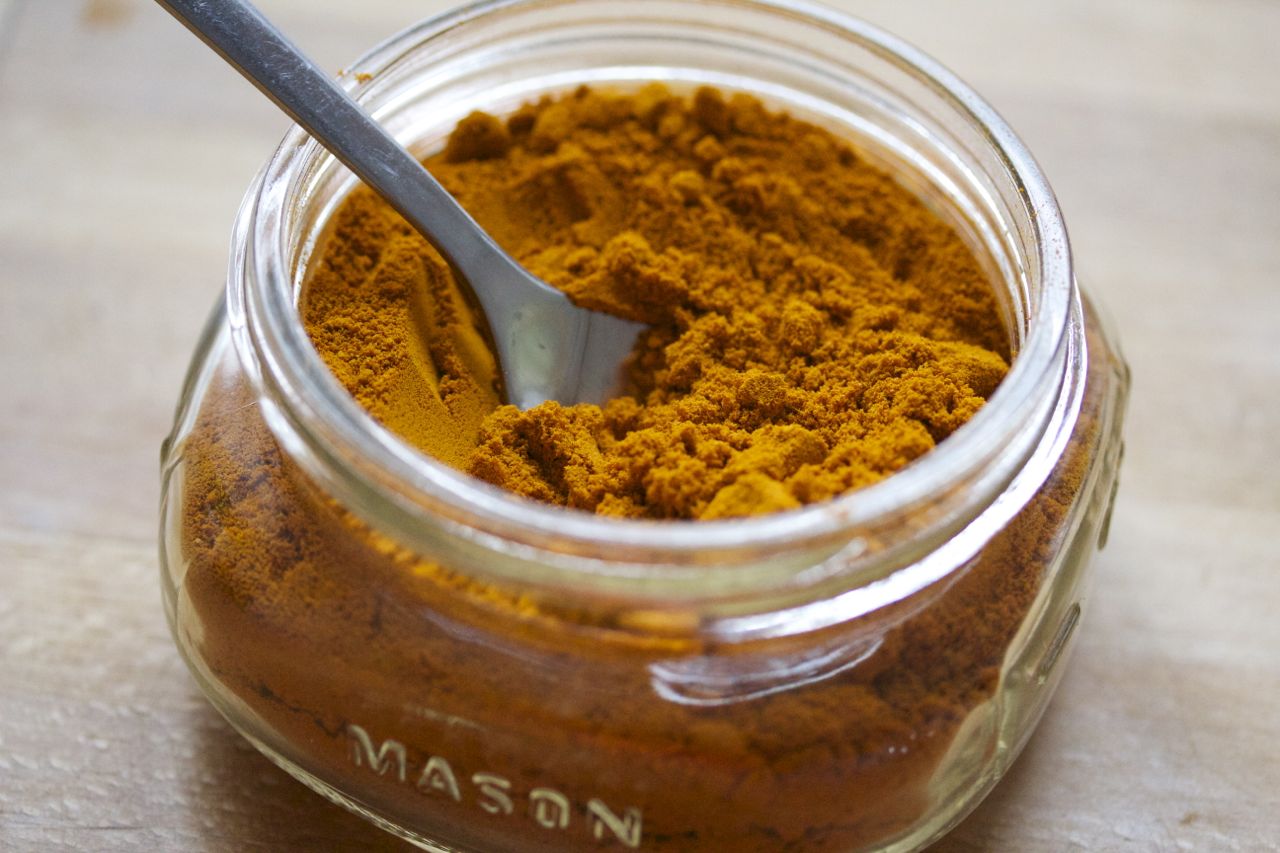Homemade Sauces: A Culinary Nutrition Guide
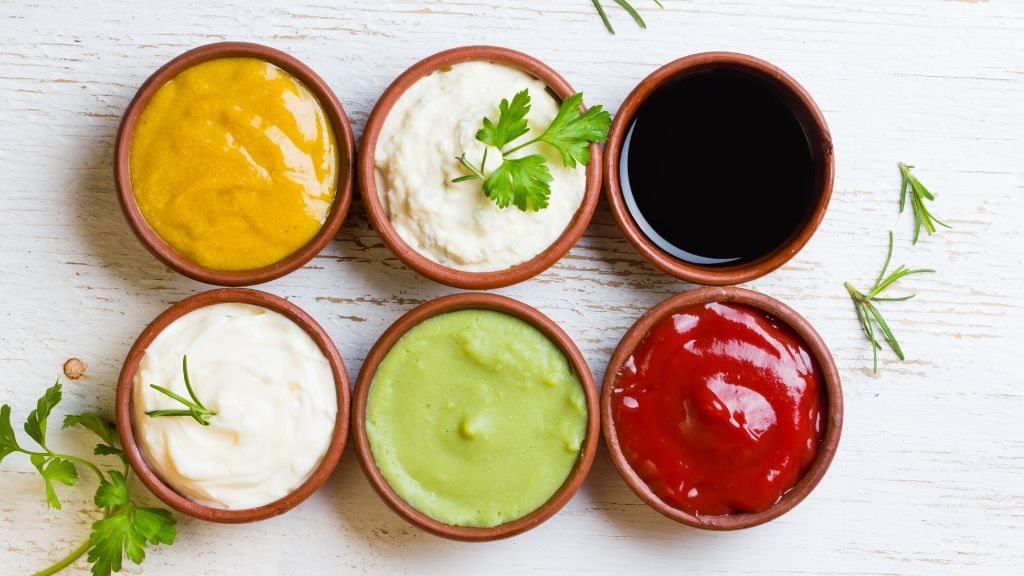
Homemade sauces provide wonderful flavour and texture to recipes – they can instantly liven up a bland plate, entice you to eat more veggies, and add an extra layer of nutrition to a meal. You might be used to purchasing condiments like salad dressings, dips, spreads and sauces at the grocery store, but when you make them at home you can control exactly what goes into them and play with fresh ingredients and spices that enhance your health.
There isn’t a single standard formula or ratio for creating sauces as there may be with other condiments; still, we’ve found there are some essential qualities and ingredients that go into a good sauce. For us at the Academy of Culinary Nutrition, homemade sauces must be:
- Relatively thick and creamy: we want it to be spreadable/dippable – when a sauce gets too thin, it turns into salad dressing territory!
- Quick and easy
- Free of preservatives, excess salt and sugar
- Made with fresh ingredients and whole foods
- Versatile – we love being able to use a single recipe as a dipping sauce, sandwich spread, marinade or power bowl ingredient
- Tasty
- Good for meal prep or batch cooking
How to Create HOMEMADE Sauces
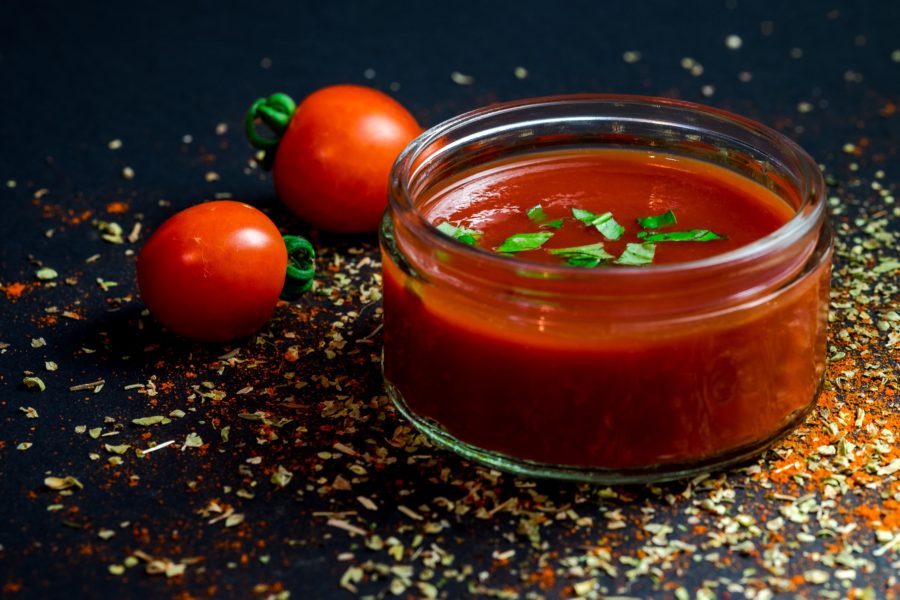
1. Decide on your base flavour(s).
The first step to creating a delicious sauce is deciding what you want the flavour profile to be and how you want to use it. For example, there aren’t many meals where you’d use a hot sauce and a gravy interchangeably. We have more details about seasoning options below, but an essential first step is to consider if you want your sauce to be sweet or savory, and what herbs and spices you can incorporate.
2. Choose between blended or chunky.
We love thick, creamy and blended sauces, but it’s really up to you what you’d like to create – and some homemade sauces may not fully work as well when totally blended, like tomato sauce and salsa.
3. The fat factor.
While not all dips and sauces will necessarily need a nutritious fat or oil, they do lend a heck of a lot of flavour and mouthfeel, help to balance blood sugar levels and are satiating. Some of the fat options you could choose include:
- Olive oil
- Coconut oil
- Ghee
- Nut or seed butters
- Cashew cream
- Avocado
- Coconut milk or a thick nut and seed milk
- Ground flax or chia seeds (these will help to thicken a dip or sauce, too)
4. Incorporate some vegetables.
A lot of homemade sauces focus on specific vegetables, such as tomato sauce, spinach and artichoke dip, salsa, guacamole, and others. Garlic and onions, fantastic immune-boosting foods, are often central to many sauces.
Consider how you might be able to amp up the nutritional profile and add more fibre by including more vegetables, or using vegetables that conventional recipes do not always have. Try adding some pumpkin purée or mashed sweet potatoes to tomato, curry or BBQ sauce, or blend in some butternut squash or red pepper to make a dairy-free cream sauce.
Starchy vegetables like pumpkins, winter squashes, yams, sweet potatoes, carrots, parsnips and celery root can make tasty bases for comfort-food sauces with a nutritious twist, as can cauliflower and mushrooms.
5. Use herbs and spices to boost nutrition.
The health benefits of your sauces will depend on the herbs you choose, but in general most herbs and spices have anti-inflammatory, immune-boosting, anti-bacterial and antiviral properties, and are sources of antioxidants.
Learn more about herbs and spices, culinary adaptogens, and other immune-enhancing ingredients you can add to your homemade sauces.
6. Add salt, sweetness or an acid to balance flavours.
Homemade sauces will benefit from a nice balance of flavours. We have some suggestions below for balancing flavours, and we also love the book Salt, Fat, Acid, Heat by Samin Nosrat, one of our favourite food activists, and the Netflix documentary of the same name.
Salt
Most culinary nutrition sauces will benefit from the addition of salt. We like using sea salt, which you can learn more about in this post about the best types of salt to use. Other salty ingredients that you can draw upon are gluten-free soy sauce or tamari, fish sauce, miso, sea vegetables, or anchovies.
Sweeteners
Most savory dips and sauces will need sweetness to balance out salty, sour, spicy or bitter flavours. You may want to add a natural sweetener to BBQ sauce or teriyaki sauce which relies on the sweet-tangy connection, or you could use molasses, dates or other fruit to sweeten.
Acids
There are a variety of acidic ingredients you can use to adjust the flavours of your sauces, including:
- lemon or lime juice
- orange juice
- apple cider vinegar
- balsamic vinegar
- rice vinegar
- wine
- tomatoes
7. Do you need to add protein?
Some sauces will have a protein built right in, like chickpeas in hummus or yogurt in several kinds of dips and sauces. There are also a number of sauces that include nut and seed butters. However, not all sauces will necessarily need a protein – since in most cases you will be using them to top a balanced meal or snack.
homemade Sauces: ideas and inspiration
Let’s take a look at some of the essential components and combinations you can use to make common homemade sauces!
BBQ Sauce
Key Ingredients
- Tomato sauce, crushed tomatoes, or fresh chopped tomatoes
- Honey or maple syrup
- Apple cider vinegar
- Garlic
- Onions
- Mustard
- Molasses
Best Uses: Marinade, dipping sauce, baked beans, glazes, meatballs, BBQ-style pizza and tacos
Recipe to Try: Vegan Gluten-Free Barbecue Sauce by Meghan Telpner (*ACN Founder + Director)
Dairy-Free Cream Sauce/Cheese Sauce
Key Ingredients
- Cashews
- Nutritional yeast
- Cauliflower, carrots, squash or sweet potato for extra nutrition and creaminess
- Onions
- Garlic
- Turmeric
- Smoked Paprika
Best Uses: Dairy-free mac and cheese, drizzled over vegetables or source of protein, dipping sauce, pizza or pasta sauce, queso dip
Recipe to Try: Vegan Pumpkin Mac and Cheese Sauce by Planted and Picked (*Culinary Nutrition Expert)
Tomato Sauce
Key Ingredients
- Crushed or diced tomatoes (preferably from a BPA-free jar), or fresh tomatoes
- Olive oil
- Basil
- Thyme
- Oregano
- Parsley
- Black pepper
- Onions
- Garlic
Best Uses: Pasta or pizza, dipping sauce, chili, meat or veggie loaves, soups and stews, baked eggs
Recipe to Try: Soul Satisfying Tomato Sauce by Caitlin Iles (*Culinary Nutrition Expert + Program Coach)
Hot Sauce
Key Ingredients
- Chili peppers
- Apple cider vinegar
- Garlic
Best Uses: Get our hot pepper guide and how to use them here
Recipe to Try: Easy Homemade Hot Sauce by The Curious Chickpea
Gravy
Key Ingredients
- Broths or stocks (vegetable or animal)
- Ghee or olive oil
- Gluten-free flour, for thickening (rice, tapioca and arrowroot work well)
- Thyme
- Garlic and onion powder
- Mushrooms
Best Uses: Served over rice, pasta, polenta, animal protein, or mashed/steamed/roasted vegetables, topping for meat or veggie loaf, fold into meatballs for extra flavour
Recipe to Try: Gluten-Free and Vegan Mushroom Gravy by Nyssa’s Kitchen
Fruit Sauce
Key Ingredients
- Fresh fruit
- Spices of choice
- Chia seeds or flax seeds, for thickening (optional, add after the fruit has been cooked)
Best Uses: Dollop on porridge, gluten-free granola, grain-free granola, dairy-free yogurt, dairy-free cheesecake or dairy-free ice cream, use as a pie filling, spread on toast like jam
Recipe to Try: Blueberry Compote by Sondi Bruner (*ACN Head Program Coach)
Chocolate Sauce
Key Ingredients
- Cacao powder or cocoa powder
- Coconut oil
- Natural sweetener
- Coconut milk (optional)
- Nut or seed butter (optional)
Best Uses: Dairy-free elixirs, drizzle over ice cream, chocolate desserts, gluten-free baked goodies
Recipe to Try: Chocolate Hemp Spread by Meghan Telpner (*ACN Founder + Director)
Caramel Sauce
Key Ingredients
- Coconut milk, coconut cream or dates
- Almond butter or cashew butter (or tahini)
Best Uses: Drizzle on dairy-free ice cream, brownies, cookies, desserts, oatmeal, fresh fruit
Recipe to Try: Silky Sweet Vegan Caramel Sauce by Feasting on Fruit
Herby Sauce (Pesto, Chimichurri)
Key Ingredients
- Parsley or cilantro
- Dark leafy greens
- Nutritional yeast
- Almonds, cashews, sunflower seeds, hemp seeds or pumpkin seeds
- Lemon
- Garlic
- Olive oil
Best Uses: Salads, pasta, taco or burrito topping, dip for fresh veggies or gluten-free crackers, marinade, pizza sauce, sauce for cooked vegetables, gluten-free toast
Recipe to Try: Easy Vegan Pesto by Minimalist Baker
Curry Sauce (Indian)
Key Ingredients
- Coconut milk or cashew cream
- Garlic
- Onion
- Ginger
- Curry powder
- Turmeric
- Cumin
- Coriander
- Tomato paste
- Paprika
- Fresh cilantro
Best Uses: Curries, dipping sauce, drizzled over vegetables or meat
Recipe to Try: Cleaned Up Butter Chicken by That Clean Life (*Culinary Nutrition Expert)
Curry Sauce (Thai)
Key Ingredients
- Coconut milk
- Garlic
- Onion
- Ginger or galangal
- Lemongrass
- Lime
- Basil or Thai Basil
- Fresh cilantro
- Fish sauce or gluten-free soy sauce
Best Uses: Curries, soups, gluten-free noodle dishes
Recipe to Try: Thai Green Curry Sauce by Spruce Eats
No-Peanut Sauce
Key Ingredients
- Almond butter, sunflower seed butter or tahini
- Ginger
- Garlic
- Apple cider vinegar or lime
- Gluten-free soy sauce or tamari
- Sesame oil
- Maple syrup
Best Uses: Gluten-free noodles, stir-fries, dipping sauces, wraps, marinade for meat, vegetables or tofu/tempeh, salads, power bowls
Recipe to Try: No-Peanut Sauce by Meghan Telpner (*ACN Founder + Director)
Thickening Homemade Sauces
As we mentioned, we like our sauces to be thick. There are a few options for creating a thick sauce, such as using:
- Less liquids
- Mashed starchy vegetables or cauliflower
- Cashew cream or coconut cream
- Solid fat like coconut oil or ghee
- Gluten-free flour
- Ground chia seeds or flax seeds (add after cooking, as their nutrients are delicate and can be damaged by heat)
Some sauces will naturally thicken and firm up in the fridge, like gravies, sauces with flax or chia, or coconut products.
Storing Homemade Sauces
Store all of your sauce creations in well-sealed containers in the fridge or freezer. Sauces with larger ratios of an acid (citrus, vinegar) should keep longer in the fridge.
You can also batch cook and freeze sauces for later, keeping a smaller amount in the fridge for immediate use. Many sauces like pesto, tomato sauce and curry freeze well in ice cube trays, where you can pop a cube out for a quick burst of flavour to your dishes.
Homemade sauces can play a crucial role in the success of your meal – we encourage you to take the time to experiment with them for flavourful cooking!
Free Resource Library
Enjoy more than 40 downloadable guides, recipes, and resources.















